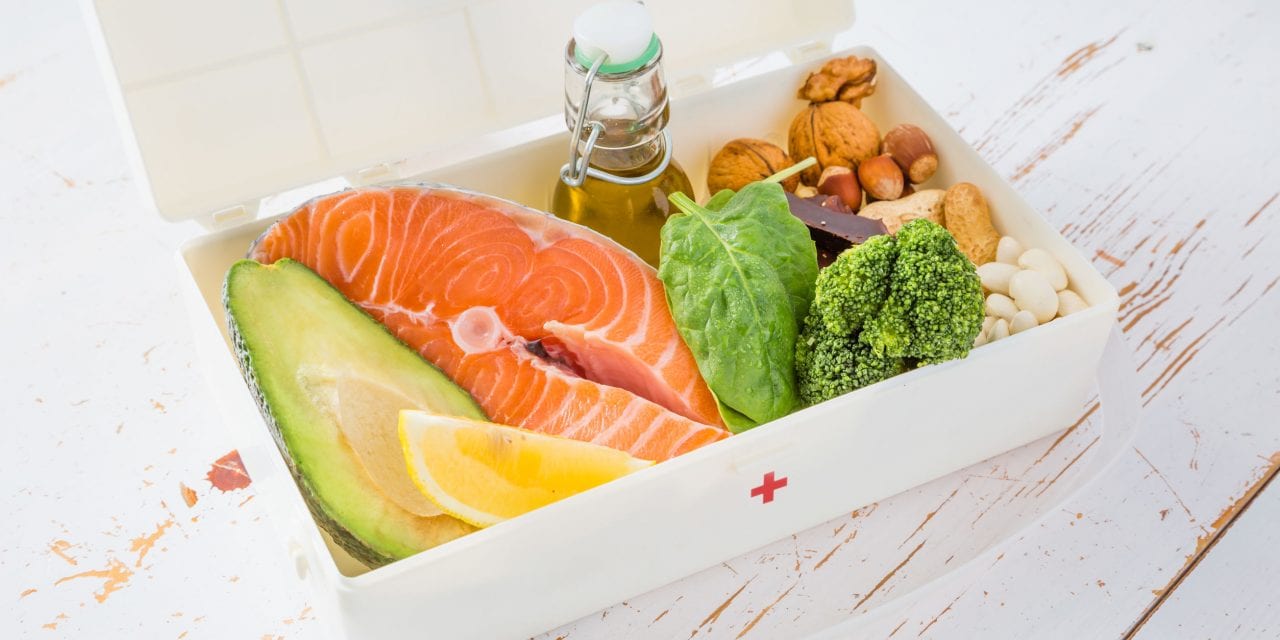Next to laughter, this may be the best medicine!
By Susan Saldibar
The concept of food-as-medicine is not new. Herbs, as an example, were routinely used therapeutically until around the mid-19th century, when pills and other forms of synthetic medications began to proliferate in the healthcare scene. That said, we are seeing a resurgence of food-as-medicine in care settings like hospitals, and it’s slowly making its way into senior living communities as well.
I caught up with Dana Fillmore, Healthcare Customer Marketing Manager for Gordon Food Service (a Senior Housing Forum partner). Dana has seen a lot of changes over the last five years in the receptivity of senior living to putting a greater focus on the potential of good nutrition to maintain health and improve healing. “We are seeing food-as-medicine making inroads as more health systems recognize good nutrition as an integral part of quality outcomes and health,” she says. “Through nutritional changes and educational programs they are trying to prevent, limit, or even reverse disease by changing what patients eat.”
Food-as-medicine has a positive ripple effect. And it’s making its mark on healthcare.
Food-as-medicine can even impact things like referral networks, Dana tells me. “Post-acute care providers and assisted living operators are looking for ways to make it on the referral shortlist,” she says. “Those communities with a food-as-medicine culture are attractive to hospitals and physicians’ groups wanting to reduce re-admits and keep residents healthier longer,” she adds.
Dana shared with me a really interesting webinar, hosted by three healthcare experts who share their expertise and stories about the power of nutritious food in hospital settings. Food is medicine, they say, and it’s an important part of healthcare.
Is your community doing these things? Might be a smart move!
Here is what some forward-thinking hospitals are doing to implement the food-as-medicine model. Ask yourself if your community is doing any of them:
Recipe and Menu Revamp:
-
Make over favorite recipes with healthy ingredients that reduce saturated fat, sodium, and refined carbohydrates.
-
Use herbs and seasonings in place of salt. Fresh chopped herbs, added just before serving, can improve the taste of dishes that are lower in sodium and fats. (The results are fewer leftovers on plates, increased compliments about the food, better hydration, and nutrition.)
-
Offer a variety of natural food choices that work across all diets.
-
Ensure healthy options for entrees and sides are readily available. (Follow evidence-based guidelines, such as those identified in the DASH diet.)
-
Offer choice so that residents can get what they perceive as healthy.
-
Indicate “good for you” items such as vegetarian, low fat, low sodium, or high fiber.
Internal education and awareness:
-
Help educate staff (healthcare and frontline) about the importance of good nutrition.
-
Screen residents for malnutrition and food insecurity and connect those in need with existing community services.
Community outreach activities:
-
Teach culinary skills and nutrition to residents, their families, and the greater community.
-
Influence behavioral change by making better food affordable and accessible:
-
Grow community gardens
-
Host a Farmers Market
-
Develop a healthy food pantry
-
Provide to-go healthy meals/groceries to residents, families, and the greater community
-
Form partnerships with aligned organizations in the community.
This is an impressive set of lists which might be intimidating to senior living communities with a lot on their plates already. I asked Dana how they might get started. Here are her suggestions:
-
Start recipe tasting sessions with your residents and let their ideas guide your offerings.
-
Reach out to employees. Use the skill set of a trained food services team and dietitians to hold cooking classes, for both residents and staff. This is especially effective for CCRCs or ILs where residents may not have a meal plan.
-
Tell your story to the greater community and invite them in to see what you are doing.
“Look at the whole life of a person, including nutrition. Refocus on the idea of food-as-medicine,” Dana says. “Make sure you are working with menus, training your team, and reaching out into the community. That’s how food-as-medicine can change your culture and your community.” And, she added one last note, “Remember, if they don’t eat it, it’s not nutrition. So make it delicious.”
Gordon Food Service has some great ideas to naturally spice up your menus. You can access them here.
For more information on Gordon Food Service, please visit their website.
Click on the button below to download a PDF copy of this article:









